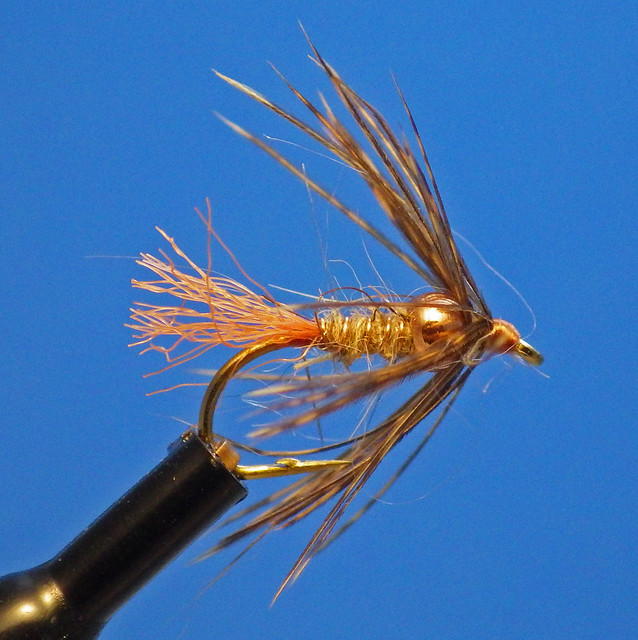Sorry if my flymph offends your sensibilities! I try to follow the only definition I know of from the master of the flymph...
"FLYMPH-A WINGLESS ARTIFICIAL FLY with a soft, translucent body of fur or wool which blends with the undercolor of the tying silk when wet, utilizing soft hackle fibers easily activated by the currents to give the effect of an insect alive in the water, and strategically cast diagonally upstream or across for the trout to take just below or within a few inches of the surface film."
I tied it with a translucent body of fur, an undercolor of tying thread and using 2 turns of soft hackle.
I used to tie flies like this before the name flymph was even published in 1971. My first tying lesson in 1959 included teaching me how to blend dubbing furs to achieve what Pete terms Mimicry. That is one reason I was happy to find Pete's book on the flymph in the 1980's. I have fished many of the same waters where the flymph was developed by Hidy.
I have tied at shows in Oregon, Washington, and Idaho where I have met and discussed Flymphs with old tying and/or fishing buddies of Pete's who complemented me on my flies and said how Pete would have liked them.
I find it ironic this provincial moment happened to me around a Hare's ear fly. Here is a quote from me in 2012 on the topic in the "one moment please" discussion about the definition.
viewtopic.php?f=6&t=3973&hilit=flymph+d ... n&start=10
"Only a few of us feather and fur fanatics split our Hares into Lug, Poll and finer hairs.


"
To paraphrase Big Jim...
"We tie flies for pleasure: I for Mine, you for yours"
Enjoy your tying Gentlemen!
 IMGP3471 by William Lovelace, on Flickr
IMGP3471 by William Lovelace, on Flickr IMGP3471 by William Lovelace, on Flickr
IMGP3471 by William Lovelace, on Flickr